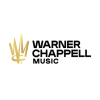SONGWRITERS REFUTE FALSE CLAIMS REGARDING
COPYRIGHT ROYALTY BOARD
Fellow Songwriters and Composers:
We are the three songwriters and board members of the Nashville Songwriters Association International (NSAI), who testified during the last Copyright Royalty Board (CRB) proceeding, who are reaching out to you to address patently false and misguided accusations that have recently appeared in the media by critics who chose not to participate.
Our collective testimony during CRB III in 2016 helped us WIN a nearly 44% increase in digital mechanical royalties from streaming companies—the largest digital mechanical royalty hike for songwriters in history!
Even after that resounding victory, some want to criticize the Nashville Songwriters Association International’s (NSAI) decision not to challenge the statutory royalty rate that record labels currently pay songwriters on physical products such as CDs and vinyl in the upcoming rate trial called CRB IV.
What these critics are not telling you is that we did fight that battle in 2006, during CRB I, when we asked the Copyright Royalty Board to increase the physical rate, while critics were nowhere to be found. Instead, after our side spent more than $20 million, the judges kept the rate exactly where it was, at 9.1 cents. Record labels earn substantially less from physical products now than they did then. Had we chosen to fight them again, they would have argued for a rate DECREASE! They could also have contested our much more meaningful streaming rates resulting in us having to fight two powerful groups, streaming companies, and the labels.
Based on industry revenue analysis, it is anticipated that physical mechanical royalties will amount to less than 1% of the total mechanical royalty revenue in the United States during 2023-2028, the rate period this CRB proceeding covers. History and experience told us not to create a powerful opponent when there is a strong possibility of losing with little to gain. So, we decided to focus on the digital streaming services and streaming rates during the next trial. While 1% of revenue is meaningful, waging war was not worth the risk, especially since the rate may have been lowered!
Critics are insinuating that we somehow “might now be employing sneaky tactics to make it harder for artists and songwriters to comment on” our decision not to contest the physical royalty. They say that NSAI was part of a plan to manipulate court filings, in order to make it harder for them to respond. That is false. *
Alleging that we are complicit in such a tactic, which amounts to a federal crime, is insulting and may even be libelous. How could we hide such a maneuver from the court? Are these groups suggesting the Copyright Royalty Board judges were involved in their ridiculous allegation?
Also false is the critics’ suggestion that the CRB took some drastic action in stating it will publish the settlement in the Federal Register for comment. Such publication is required by the law, as is the right of the public to comment during a period set forth in the CRB’s notice. Everything is out in the open and subject to scrutiny. Stating or implying the opposite is completely false and disingenuous. We are all for public comment on this matter, but the critics know you must qualify months in advance for the CRB to consider physical rates. The question songwriters and composers should be asking is why these false critics did not participate in the trial themselves. Any of these groups or individuals could have participated, but they did not even try.
The three of us took time from writing and from our personal lives to prepare for a daunting endeavor, testifying before three Copyright judges in Washington, D.C., on behalf of every American songwriter. To the critics who also fail to acknowledge that in the process we secured the largest digital mechanical rate increase in history, we want to set the record straight. Instead of opening a Pandora’s box that could result in physical rates being lowered, we ensured they would not. Our decision to focus on protecting the unprecedented increase for streaming mechanicals was strategic, responsible and in the best interest of songwriters.
Sincerely,
Steve Bogard, Lee Thomas Miller, and Liz Rose – songwriters.
|
|





